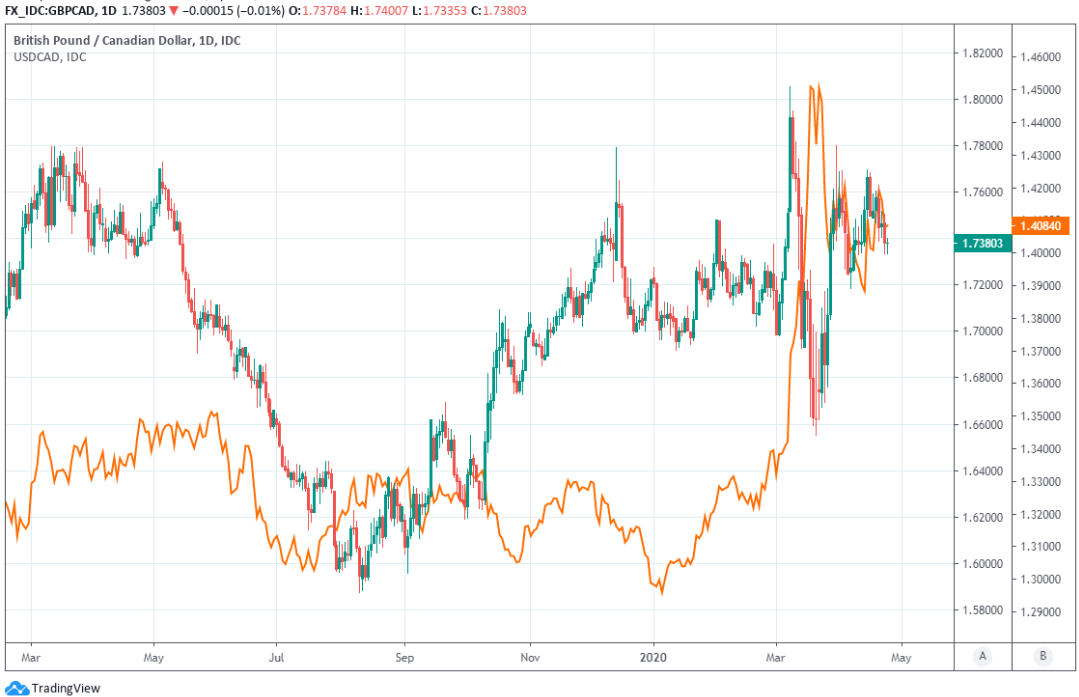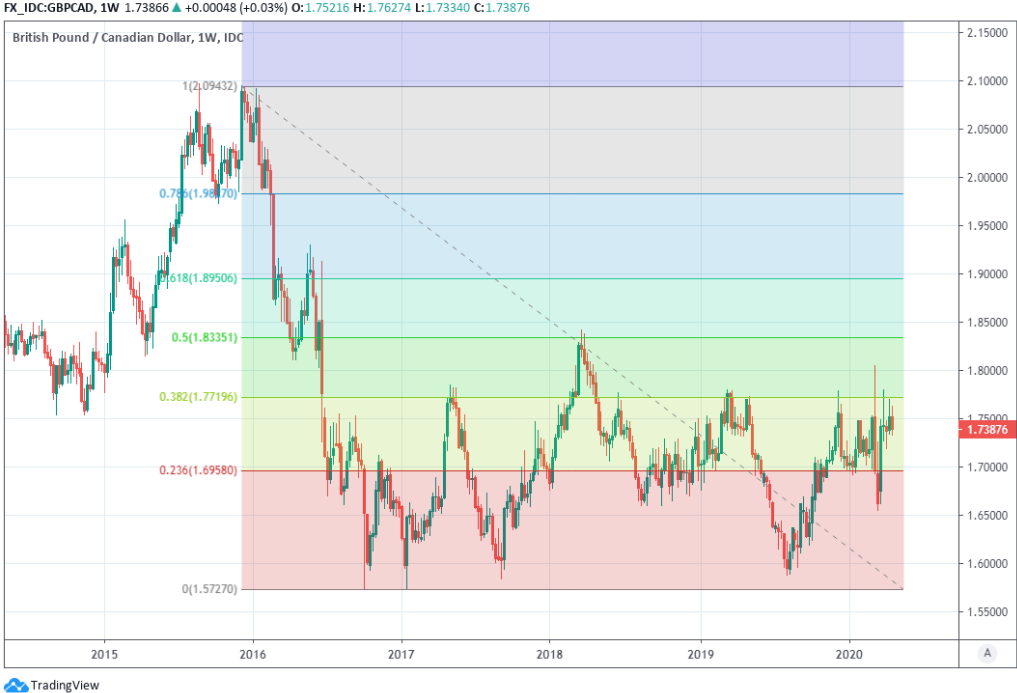Pound-Canadian Dollar Forecasts Point Back to 2020 Highs and Beyond
- Written by: James Skinner
-

Image © Adobe Stock
- GBP/CAD spot at time of writing: 1.7383
- Bank transfer rates (indicative): 1.6777-1.6898
- FX specialist rates (indicative): 1.7124-1.7229 >> Get your quote now
The Pound was treading water against a resilient Canadian Dollar Friday but will soon return to its 2020 high against the Loonie, according to the latest CIBC Capital Markets forecasts, as historic lows in some oil markets heap more pressure onto the Canadian economy and currency.
Riskier currencies like Pound Sterling and the Canadian Dollar were on the back foot ahead of the weekend although losses were about even when the two were stood next to the greenback, which kept the Pound-Canadian Dollar alternating between small fractional gains and losses. Price action came amid another day of gains for Brent and WTI crude oil futures as well as North American stock markets including those in Canada, although CIBC is sceptical of whether the equity market recovery can be sustained.
"We’re still wary of the rally in equities, since, barring the availability of a massproduced wonder drug that allows a quick end to the pandemic, the long path to restore activity to where we were in February implies a large hit to both 2020 and 2021 earnings," says Avery Shenfeld, chief economist at CIBC, in review of the bank's forecasts. "We expect the Canadian dollar to return to its recent trough, with dollar-Canada at 1.45 by mid-year."
Stock markets have recovered strongly, too strongly some analysts say, offering relief to a Canadian Dollar that often rises and falls with the ebb and flow of risk appetite. The rally was sparked by 'short-covering' in late March and built upon with a mountain of hopes that the coronavirus pandemic will either burn itself out or be countered by a treatment such as Gilead Sciences' remdesivir which was said Thursday to have failed its first trial.
Above: Pound-Canadian Dollar rate shown at daily intervals alongside USD/CAD rate (orange line).
Many have expressed concerns about how durable the recovery in risk assets will be if it turns out that economic shutdowns are slower to lift than had previously been envisaged. So far investors have widely anticipated historic levels of destruction for the first and second quarters, followed by a quick recovery in the second half that would leave the whole episode looking like a V when GDP growth rates are plotted onto a chart some time from now.
But as governments in the U.S. and Europe have set out plans to ease restrictions, it's become clear to some the recovery could take much longer than a couple of quarters, which might be negative for stocks, commodity prices and the Canadian Dollar if and when the wider market cottons on.
"While we look for modest strengthening in the loonie next year as the market looks ahead to better levels of global activity in 2022, assuming that we are seeing progress towards a vaccine, we still anticipate the need for a weaker C$ further out. That key ingredient will be necessary to see the rotation away from consumption and housing and towards exports," Shenfeld says. "The UK should experience a modest rebound in Q3, thereby easing risk negativity. In addition to the that the UK could see an extension in the Brexit implementation period that should encourage a modest GBP/USD uptrend into 2021."
The Canadian Dollar could suffer disproportionately if the 'lockdowns' of peoples are slow to lift because economies would be even slower to reopen and this might ensure more pain ahead for the price of oil, the country's largest export, which is forecast to lift the Pound-Canadian Dollar rate to and above the top of its 2020 range. Oil futures fell nearly $40 below zero this week as the expiry of contracts for the May month revealed that it now costs more to store a barrel of oil in some parts than it does to buy one.
Above: Pound-Canadian Dollar rate shown at weekly intervals with Fibonacci retracements of June 2016 downtrend.
The Pound-Canadian Dollar rate is tipped by CIBC to rise to 1.81 before the end of June, from 1.7383 on Friday, before advancing further to 1.82 in the third quarter. The year-end finish is expected around 1.81 while the USD/CAD rate is seen trading between 1.40 and 1.45, with the peak in that exchange rate coming in June and being followed by a steady decline into year-end.
"The government’s aggressive policy responses, including covering 80% of salaries of furloughed workers, will weigh upon government finances. The cost of those measures could be three times of what was initially assumed, as unemployment could rise by two million workers. Despite response efforts, the UK economy could witness a decline of approximately 15% q/q in Q2," says Jeremy Stretch, a London-based CIBC colleague of Shenfeld's.
The Pound-Canadian Dollar rate has traded within a wide 8.6% range that spans the gap between 1.65 and 1.80 in recent months but had on Friday gained only 0.76% for 2020, in large part due to the so-far indiscriminate destruction wrought on countries, peoples and economies by the coronavirus. But the market's distinction between Sterling and typically riskier commodity currencies has lessened since the coronavirus crisis compelled the government to dig deep into already stretched and worn pockets.
This has left Sterling unable to sustain gains over the Loonie this year but the sideways movement is tipped to come to an end in the months ahead, as investors contemplate what the Canadian economy might look like in a world where oil prices remain near to multi-decade lows even as the coronavirus relinquishes its grip on the societal and economic landscapes. CIBC forecasts suggest this could lead the Pound-Canadian Dollar rate to new 2020 highs.







